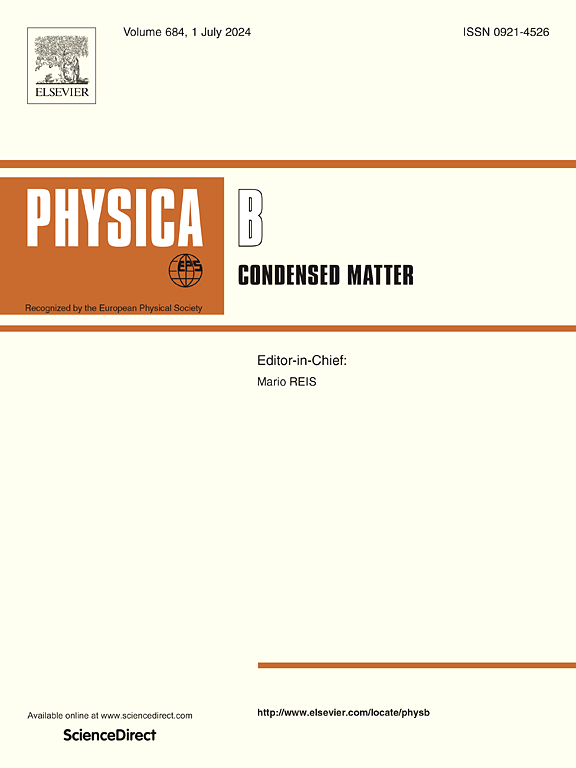Electronic and optical properties of Ti3AC2 (A=Sn, Ge, Si) MAX phases by first-principles calculations
IF 2.8
3区 物理与天体物理
Q2 PHYSICS, CONDENSED MATTER
引用次数: 0
Abstract
In order to better understand the physical properties of Ti3AC2 (A = Sn, Ge, Si) ternary carbides and to provide a theoretical basis for their applications, we have calculated the electronic structure and optical properties of Ti3AC2 (A = Sn, Ge, Si) by first principles. The results, based on the formation enthalpy and binding energy calculations, indicate that Ti3AC2 (A = Sn, Ge, Si) is thermodynamically and kinetically stable. Charge density differences and bond residence numbers further reveal the formation of a strong Ti-C bond in Ti3AC2 (A = Sn, Ge, Si), attributed to the hybridization between the C-s and Ti-d states. Finally, by analyzing the optical properties such as dielectric function, reflectivity and absorption coefficient, the results show that Ti3AC2 (A = Sn, Ge, Si) exhibits optical anisotropy.
求助全文
约1分钟内获得全文
求助全文
来源期刊

Physica B-condensed Matter
物理-物理:凝聚态物理
CiteScore
4.90
自引率
7.10%
发文量
703
审稿时长
44 days
期刊介绍:
Physica B: Condensed Matter comprises all condensed matter and material physics that involve theoretical, computational and experimental work.
Papers should contain further developments and a proper discussion on the physics of experimental or theoretical results in one of the following areas:
-Magnetism
-Materials physics
-Nanostructures and nanomaterials
-Optics and optical materials
-Quantum materials
-Semiconductors
-Strongly correlated systems
-Superconductivity
-Surfaces and interfaces
 求助内容:
求助内容: 应助结果提醒方式:
应助结果提醒方式:


